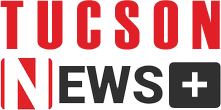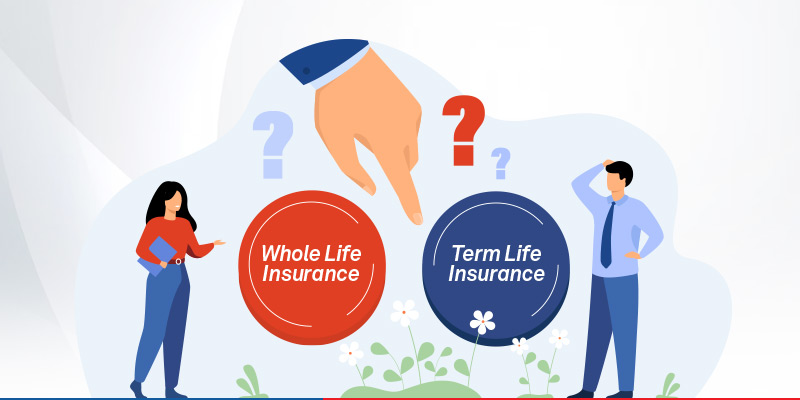Creating and delivering compelling sales presentations that close high-ticket sales requires a strategic approach that combines advanced techniques with a deep understanding of your audience’s needs and preferences. High-ticket sales, typically involving significant investment, demand presentations that not only capture attention but also build trust, convey value, and drive decisive action. Here’s an in-depth exploration of advanced techniques for crafting and delivering presentations that effectively close high-ticket sales.
1. Develop a Customer-Centric Narrative
To captivate your audience, start by developing a customer-centric narrative. This involves understanding your prospect’s pain points, goals, and motivations. Tailor your presentation to address these specific needs rather than delivering a generic pitch. Begin with a compelling story that highlights the challenges your prospect faces and how your solution can address these issues. Use data and real-life examples to build credibility and demonstrate a deep understanding of their industry.
Craft your narrative around the journey of transformation that your solution offers. Show how your product or service can elevate their business, solve critical problems, or achieve significant objectives. By personalizing the narrative, you align your presentation with the prospect’s goals, making it more relevant and persuasive.
2. Utilize Data-Driven Insights
Incorporate data-driven insights to strengthen your presentation. High-ticket buyers are often decision-makers who require concrete evidence of value and effectiveness. Presenting relevant data, case studies, and analytics can provide the assurance they need. Use statistics to highlight the success of your solution, demonstrate ROI, and showcase industry trends.
Visualize your data using charts, graphs, and infographics to make complex information more accessible and engaging. Ensure that your data is up-to-date and sourced from reputable references. This not only builds trust but also positions you as a knowledgeable expert who provides valuable insights.
3. Employ Advanced Visual Design
Advanced visual design plays a crucial role in making your presentation engaging and memorable. Utilize high-quality graphics, videos, and animations to create a visually appealing experience. Ensure that your slides are not cluttered with excessive text; instead, focus on key points and use visuals to support your message.
Incorporate interactive elements such as clickable prototypes or live demonstrations if applicable. These features can help your audience experience your solution firsthand and visualize its application in their context. The goal is to create a presentation that is not only informative but also visually stimulating, enhancing engagement and retention.
4. Implement Persuasive Storytelling Techniques
Effective storytelling is a powerful tool in high-ticket sales presentations. Use persuasive storytelling techniques to create an emotional connection with your audience. Begin with a strong opening that grabs attention and sets the stage for your solution. Share customer success stories, testimonials, and case studies that illustrate the impact of your solution.
Highlight the challenges your clients faced before using your solution and the transformation they experienced afterward. This approach helps prospects relate to the success of others and envision similar outcomes for themselves. Incorporate elements of drama, conflict, and resolution to make your story compelling and memorable.
5. Master the Art of Personalization
Personalization goes beyond addressing your prospect by name. Tailor your presentation to reflect the specific needs and preferences of your audience. Use insights gathered from previous interactions, research, and customer data to customize your content. Address their unique challenges and demonstrate how your solution aligns with their objectives.
Incorporate personalized recommendations and scenarios that resonate with the prospect’s industry or business context. This level of personalization shows that you’ve invested time in understanding their needs and are presenting a solution tailored specifically for them. It also helps build rapport and trust with the decision-makers.
6. Incorporate Interactive Elements
Interactive elements can significantly enhance the effectiveness of your presentation. Incorporate tools such as polls, quizzes, and interactive demonstrations to engage your audience actively. These elements encourage participation and provide real-time feedback, making your presentation more dynamic and responsive.
Interactive components also allow you to address specific concerns or questions on the spot, tailoring your responses to the audience’s needs. This level of engagement can make your presentation more memorable and increase the likelihood of a positive outcome.
7. Leverage Technology for Enhanced Engagement
Leverage advanced technology to enhance your presentation and create a seamless experience. Tools such as virtual reality (VR) or augmented reality (AR) can provide immersive demonstrations of your product or service. These technologies allow prospects to interact with your solution in a simulated environment, providing a deeper understanding of its capabilities.
Consider using interactive presentation software that offers advanced features like real-time collaboration, multimedia integration, and data visualization. These tools can help you create a more engaging and interactive presentation that captures your audience’s attention and keeps them involved throughout.
8. Address Objections Proactively
Anticipate and address potential objections proactively in your presentation. High-ticket sales often involve scrutiny and skepticism, so it’s important to be prepared for questions and concerns. Identify common objections related to your product or service and address them directly in your presentation.
Use evidence, case studies, and testimonials to counter objections and provide reassurance. By addressing potential concerns upfront, you demonstrate transparency and build credibility. This approach also helps to alleviate doubts and increase the likelihood of a favorable decision.
9. Highlight Unique Selling Propositions (USPs)
Clearly articulate your Unique Selling Propositions (USPs) to differentiate your solution from competitors. Identify the key features, benefits, and advantages that set your product or service apart. Emphasize how your USPs address the prospect’s specific needs and provide superior value.
Use comparative analysis to highlight the advantages of your solution over alternatives. This can include cost-benefit analysis, feature comparisons, and performance metrics. By clearly demonstrating your USPs, you reinforce the value of your offering and justify the high-ticket price.
10. Create a Strong Call-to-Action
A strong call-to-action (CTA) is essential for closing high-ticket sales. Ensure that your CTA is clear, compelling, and aligned with your prospect’s needs. Use actionable language that prompts immediate action, such as scheduling a follow-up meeting, requesting a demo, or making a purchase.
Position your CTA strategically within your presentation to maximize visibility and impact. Consider including multiple CTAs at different stages of your presentation to capture interest and encourage action. Make it easy for prospects to take the next step by providing clear instructions and contact information.
11. Practice Effective Delivery Techniques
The delivery of your presentation is as important as the content. Practice effective delivery techniques to ensure a confident and engaging presentation. Focus on your tone, pace, and body language to convey enthusiasm and professionalism.
Engage with your audience by maintaining eye contact, using gestures, and varying your vocal delivery. Be prepared to adapt your presentation based on audience reactions and feedback. Practice handling questions and objections gracefully to demonstrate expertise and build trust.
12. Analyze and Refine Your Approach
After each presentation, take the time to analyze and refine your approach. Collect feedback from prospects and review performance metrics to assess the effectiveness of your presentation. Identify areas for improvement and adjust your content, delivery, and techniques accordingly.
Regularly review your presentation materials and update them to reflect the latest information, trends, and insights. Continuous improvement ensures that your presentations remain relevant, compelling, and effective in closing high-ticket sales.
13. Build Rapport and Trust
Building rapport and trust with your audience is crucial for closing high-ticket sales. Establish a connection by demonstrating empathy, understanding, and genuine interest in their needs. Personalize your interactions and show that you value their business.
Share insights and knowledge that align with their objectives and provide value beyond the presentation. Building rapport helps create a positive relationship and increases the likelihood of a successful outcome. Trust is a key factor in high-ticket sales, and establishing it early on can significantly impact your success.
14. Use Social Proof and Testimonials
Incorporate social proof and testimonials to build credibility and reinforce the value of your solution. Share success stories, case studies, and endorsements from satisfied clients to demonstrate the effectiveness of your offering. Social proof provides validation and reassures prospects that they are making a sound decision.
Use testimonials that specifically address the challenges and goals of your target audience. Highlight measurable results and positive experiences to provide tangible evidence of your solution’s impact. This approach helps to build confidence and trust in your offering.
15. Follow Up Strategically
Following up strategically after your presentation is essential for closing high-ticket sales. Send a personalized follow-up email or message that reinforces key points from the presentation and addresses any additional questions or concerns. Include relevant resources, such as case studies or product brochures, to provide further information.
Schedule a follow-up meeting or call to discuss next steps and finalize the sale. Be prompt and proactive in your follow-up to maintain momentum and demonstrate your commitment to the prospect’s success. A well-timed and thoughtful follow-up can significantly impact the outcome of your high-ticket sales efforts.
Final Thoughts
Creating and delivering compelling sales presentations that close high-ticket sales requires a combination of advanced techniques, strategic thinking, and a deep understanding of your audience. By developing a customer-centric narrative, utilizing data-driven insights, employing advanced visual design, and mastering persuasive storytelling, you can create presentations that captivate and engage your audience. Personalization, interactive elements, and effective delivery techniques further enhance the impact of your presentation, while addressing objections, highlighting USPs, and creating strong CTAs drive action.
Building rapport and trust, using social proof, and following up strategically are key components of a successful sales strategy. Continuously analyze and refine your approach to ensure that your presentations remain effective and aligned with your goals. By implementing these advanced techniques, you can enhance your sales presentations and increase your success in closing high-ticket sales.
FAQ
1. What is a customer-centric narrative, and why is it important in high-ticket sales presentations?
A customer-centric narrative focuses on addressing the specific needs, pain points, and goals of your prospect. It’s important because it personalizes the presentation, making it more relevant and engaging for the audience. By tailoring your narrative to the prospect’s challenges and objectives, you demonstrate a deep understanding of their needs and increase the likelihood of a positive outcome.
2. How can data-driven insights enhance a sales presentation?
Data-driven insights provide concrete evidence of your solution’s value and effectiveness. By presenting relevant statistics, case studies, and analytics, you build credibility and reassure prospects of the ROI and success associated with your offering. Visualizing data through charts and graphs makes complex information more accessible and compelling.
3. What role does advanced visual design play in a sales presentation?
Advanced visual design enhances the appeal and engagement of your presentation. High-quality graphics, videos, and animations create a visually stimulating experience that captures attention. Effective design helps convey your message more clearly and keeps the audience interested, improving overall presentation effectiveness.
4. How can persuasive storytelling techniques be used in sales presentations?
Persuasive storytelling techniques involve crafting a narrative that connects emotionally with the audience. By sharing compelling success stories, testimonials, and case studies, you illustrate the impact of your solution and create a relatable story. This approach helps prospects envision the benefits and transformation your solution offers.
5. What does personalization involve in the context of a sales presentation?
Personalization involves tailoring your presentation to reflect the specific needs, preferences, and context of your audience. This includes addressing their unique challenges, using insights from previous interactions, and customizing recommendations to align with their goals. Personalization makes your presentation more relevant and engaging.
6. How can interactive elements be incorporated into a sales presentation?
Interactive elements such as polls, quizzes, and live demonstrations can be used to engage your audience actively. These features encourage participation and provide real-time feedback, making the presentation more dynamic and responsive. Interactive components help maintain interest and address questions or concerns immediately.
7. What types of technology can enhance a sales presentation?
Advanced technology such as virtual reality (VR) and augmented reality (AR) can provide immersive demonstrations of your product or service. Interactive presentation software with features like multimedia integration and real-time collaboration can also enhance the presentation experience. Leveraging technology helps create a more engaging and memorable presentation.
8. How should potential objections be addressed in a sales presentation?
Anticipate common objections and address them proactively in your presentation. Use evidence, case studies, and testimonials to counter objections and provide reassurance. Addressing concerns upfront demonstrates transparency and builds credibility, helping to alleviate doubts and increase the likelihood of closing the sale.
9. What are Unique Selling Propositions (USPs), and how should they be highlighted?
Unique Selling Propositions (USPs) are the distinct features and benefits that differentiate your solution from competitors. Highlight USPs by clearly articulating the advantages and superior value of your offering. Use comparative analysis to emphasize how your solution addresses specific needs better than alternatives.
10. How can I create an effective call-to-action (CTA) in a sales presentation?
Create an effective CTA by using clear, compelling, and actionable language that prompts immediate action. Ensure the CTA is aligned with the prospect’s needs and positioned strategically within the presentation. Provide easy-to-follow instructions and contact information to facilitate the next steps and encourage conversion.
11. What are some effective delivery techniques for sales presentations?
Effective delivery techniques include maintaining a confident tone, pacing your speech, and using engaging body language. Make eye contact, use gestures, and vary your vocal delivery to convey enthusiasm and professionalism. Be prepared to adapt based on audience reactions and handle questions gracefully.
12. Why is it important to analyze and refine your presentation approach?
Analyzing and refining your presentation approach allows you to assess its effectiveness and make improvements. Collect feedback, review performance metrics, and identify areas for enhancement to ensure that your presentations remain relevant, compelling, and successful in closing high-ticket sales.
13. How can building rapport and trust impact high-ticket sales?
Building rapport and trust is crucial for high-ticket sales because it establishes a positive relationship with the prospect. Demonstrating empathy, understanding, and genuine interest helps create a connection and builds confidence in your solution. Trust is a key factor in high-ticket sales, influencing the decision-making process.
14. What role does social proof play in a sales presentation?
Social proof, such as testimonials, case studies, and endorsements, provides validation and credibility to your solution. It reassures prospects by showcasing the positive experiences and success of other clients. Social proof helps build confidence and trust, reinforcing the value of your offering.
15. How should follow-up be handled after a sales presentation?
Follow up strategically by sending a personalized email or message that reinforces key points from the presentation and addresses any additional questions. Include relevant resources and schedule a follow-up meeting or call to discuss next steps. Prompt and thoughtful follow-up maintains momentum and demonstrates commitment to the prospect’s success.
Get in Touch
Website – https://www.webinfomatrix.com
Mobile - +91 9212306116
Whatsapp – https://call.whatsapp.com/voice/9rqVJyqSNMhpdFkKPZGYKj
Skype – shalabh.mishra
Telegram – shalabhmishra
Email - info@webinfomatrix.com








 English (US) ·
English (US) ·